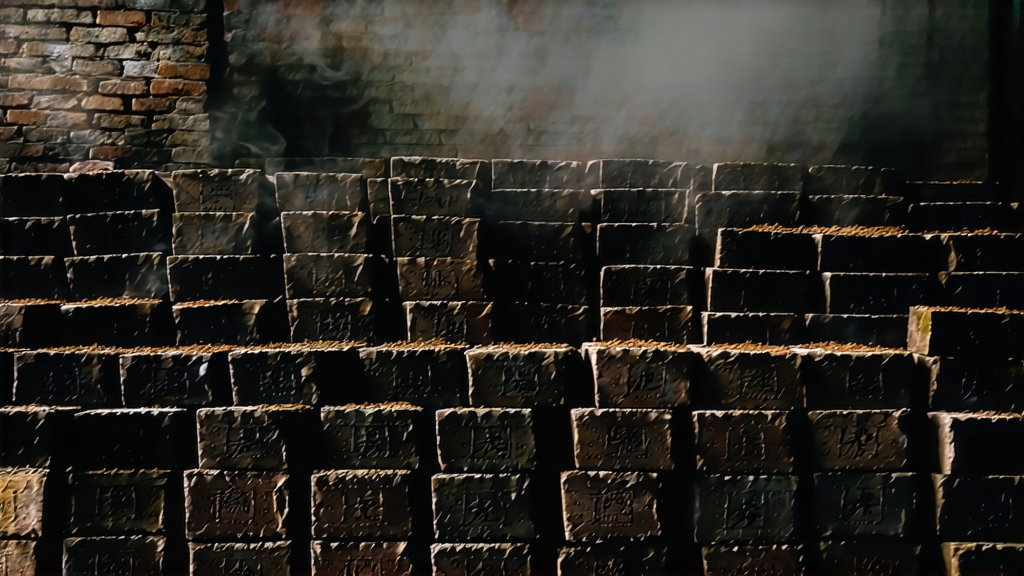
Tucked away in the subtropical mountains of southern China, Liu Bao tea has quietly fermented its way through five centuries, yet remains almost unknown outside Asia. To the global tea family it is a “dark tea” (hei cha), the same technological group that shelters Pu-erh, but Liu Bao speaks its own dialect of earth, wood, and warming spice. This article invites the international reader to meet the tea that once rode the Tea Horse Road southward to Southeast Asia, sustained miners in British Malaya, and is now re-emerging as a collectible for those who crave depth, age, and story in every cup.
-
From Frontier Necessity to Maritime Currency
The name “Liu Bao” simply means “Six Forts,” a cluster of villages in Wuzhou prefecture, Guangxi Zhuang Autonomous Region. During the Ming Jiajing era (1522-1566), imperial troops stationed along the Yao tribal frontier found that their coarse tea resisted mold when steamed, piled, and packed into bamboo baskets. The technique—accidental at first—created a mellow, reddish liquor that calmed stomachs in the damp heat. By the Qing dynasty the same tea was being floated down the Xun River to the Pearl River Delta, then loaded onto junks bound for Singapore, Penang, and Jakarta. In the tin mines of Ipoh, Liu Bao became wages; laborers believed its “warm” energy neutralized the “cold” humidity of pit work. Thus a mountain tea turned into maritime currency, aging in the holds of ships and the attics of kopitiams long before “post-fermentation” became a scholarly term. -
The Microbiome in a Basket
Unlike Pu-erh, which relies on Yunnan’s large-leaf Assamica, Liu Bao starts with the medium-leaf variety Camellia sinensis var. sinensis grown on red-clay hills 200–600 m above sea level. After spring picking—one bud with three to four leaves—the leaf is carried through six fixed steps:
• Withering under mountain shade for 3–5 hours to reduce grassy notes.
• Kill-green in a 200 °C drum for 90 seconds, hot enough to halt oxidation but leave surface microbes intact.
• Rolling for 40 minutes to rupture cells and release sticky juices.
• Piling 60 cm deep in humid rooms (28 °C, 85 % RH) for 10–15 hours; this “wet pile” invites a bloom of Aspergillus niger, Blastobotrys adeninivorans, and thermophilic yeasts that begin true fermentation.
• Drying on bamboo racks over pine-charcoal fires, absorbing faint smoke that later marries with age.
• Steam-softening and pressing into 30–50 kg bamboo baskets called lang. The lang are stacked in dim, almost swampy cellars where fermentation continues for months, years, or decades. The result is a leaf the color of rusted iron and a liquor that smells of betel nut, damp bark, and molasses. -
Reading the Years: Grades and Markings
Liu Bao is classified by harvest year, leaf grade, and basket weight. Vintage lots carry stenciled codes such as “5105” (State Tea Company, 5th grade, 2005) or “CRL 92108” (China Resources Liu, top grade, October 1992). The connoisseur looks for three signs of authenticity: -
Golden “tiger-skin” flecks—crystals of oxidized theaflavins that glitter under light.
-
A hollow, drum-like sound when tapping the basket, indicating proper drying and no interior rot.
-
The “pine smoke ring”: a 2-mm amber rim at the basket wall left by years of charcoal vapour. Top lots are traded like Burgundy; a 1983 “CRL” once fetched USD 18,000 at a Kuala Lumpur auction.
-
Brewing the Mountain and the Sea
Liu Bao forgives the novice but rewards the patient. The goal is to coax sweetness without muddy earthiness. Begin with 5 g of leaf in a 120 ml Yixing clay teapot that has previously seasoned with darker teas; the clay’s micro-pores round off edges. Rinse for five seconds with water just off the boil (100 °C)